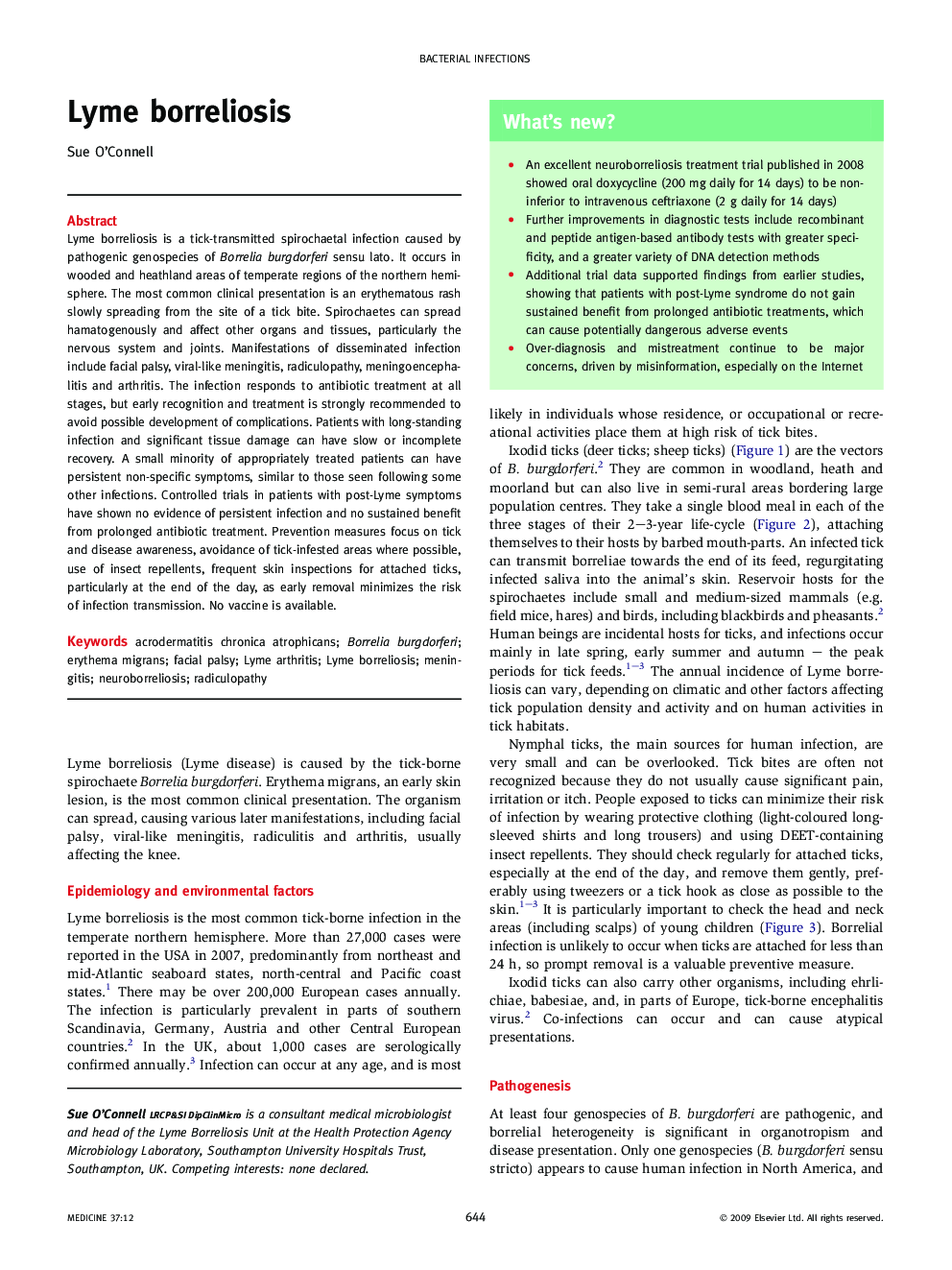| Article ID | Journal | Published Year | Pages | File Type |
|---|---|---|---|---|
| 3807591 | Medicine | 2009 | 5 Pages |
Lyme borreliosis is a tick-transmitted spirochaetal infection caused by pathogenic genospecies of Borrelia burgdorferi sensu lato. It occurs in wooded and heathland areas of temperate regions of the northern hemisphere. The most common clinical presentation is an erythematous rash slowly spreading from the site of a tick bite. Spirochaetes can spread hamatogenously and affect other organs and tissues, particularly the nervous system and joints. Manifestations of disseminated infection include facial palsy, viral-like meningitis, radiculopathy, meningoencephalitis and arthritis. The infection responds to antibiotic treatment at all stages, but early recognition and treatment is strongly recommended to avoid possible development of complications. Patients with long-standing infection and significant tissue damage can have slow or incomplete recovery. A small minority of appropriately treated patients can have persistent non-specific symptoms, similar to those seen following some other infections. Controlled trials in patients with post-Lyme symptoms have shown no evidence of persistent infection and no sustained benefit from prolonged antibiotic treatment. Prevention measures focus on tick and disease awareness, avoidance of tick-infested areas where possible, use of insect repellents, frequent skin inspections for attached ticks, particularly at the end of the day, as early removal minimizes the risk of infection transmission. No vaccine is available.
